Syria is in the fourth year of war, but its Kurdish population has refused to side with anyone but themselves. Does their democratic “third revolution” stand a chance?
In a dusty village surrounded by golden wheat fields on the outskirts of the Syrian town of al-Qamishli, I sit in a courtyard on a flimsy plastic chair sipping heavily sugared tea. Northeastern Syria, much like the rest of Kurdistan, must be a diabetes hotbed. Every cup leaves you wanting actual tea with the sugar. It’s early June, and as the sun sets, the air remains muggy. Across from me sits Mohammed Amin.
I met Amin four days ago when he entered the local Kurd’s house where I was staying. With his shaky, limited English we talked about why I had come to visit his neighborhood. He wanted to know how the West saw the Kurdish part of the Syrian war. Like many Kurdish people, Amin loves George Bush for freeing the Iraqi Kurds from Saddam. He idolizes the U.S. and its freedoms and talks at great lengths about the wondrous infrastructure and equality in the States.
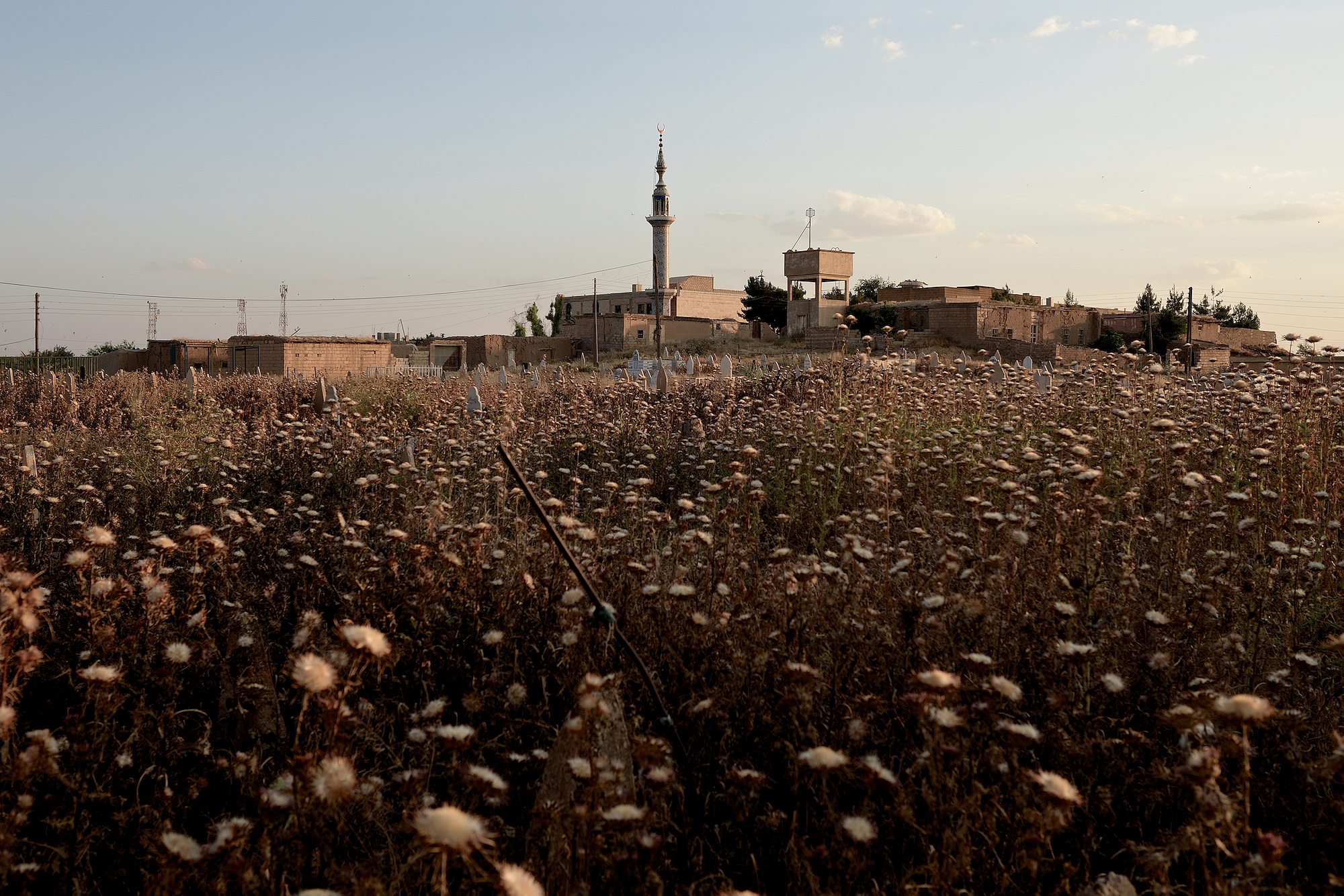
Though much of Syria has turned into a nightmare, the Kurdish region in the northeast of the country has largely been spared. The Kurds refer to this de facto autonomous place as Rojava, which translates directly as “west” or more poetically as “where the sun sets.” It’s the western-most section of a divided Kurdish territory split between Iran, Iraq, Turkey, and Syria.
As Amin and I eat dinner a few days later, the 62-year-old points out the dishes laid before us. The eggs are from the chickens in his backyard. The yogurt and cheese from his friend’s dairy farm. The marmalade and stuffed fig leaves made by his wife and daughters. The cucumbers and tomatoes grown in his farm. The bread that accompanies every meal in the Middle East made by a baker right down the street with the wheat from a local field. Syrian Kurds are self-sufficient. They must be to survive.
Syrian rebels accuse the Kurds of siding with Assad, while regime supporters accuse them of supporting the rebels
Syria is well into the fourth year of its bloody civil war, spiraling further into seemingly endless humanitarian disasters with every passing day. In the west, around the cities of Homs, Hama, and Aleppo, violence between splintered rebel fractions has battered local populations while barrel-bomb assaults by the Assad regime’s air force kill civilians and rebels alike. The Kurdish population, though, has refused to align with any side in the conflict.
As a result, Syrian rebels accuse the Kurds of siding with Assad, while regime supporters accuse them of supporting the rebels. The Kurds, for their part, say that they are in the midst of a revolution to gain autonomy for their region. They intend to establish a democracy, siding neither with regime or the rebels, but with themselves, asserting a “third revolution” that is distinctly their own.
So far, it’s a revolution that appears to be working. With Assad’s government forced to concentrate efforts fighting the rebels, and, more recently, ISIS, the Kurds managed to build an interim government over the past year with local councils and armed forces like the Kurdish People’s Protection Units (YPG) and Asayish, the Kurdish police force.
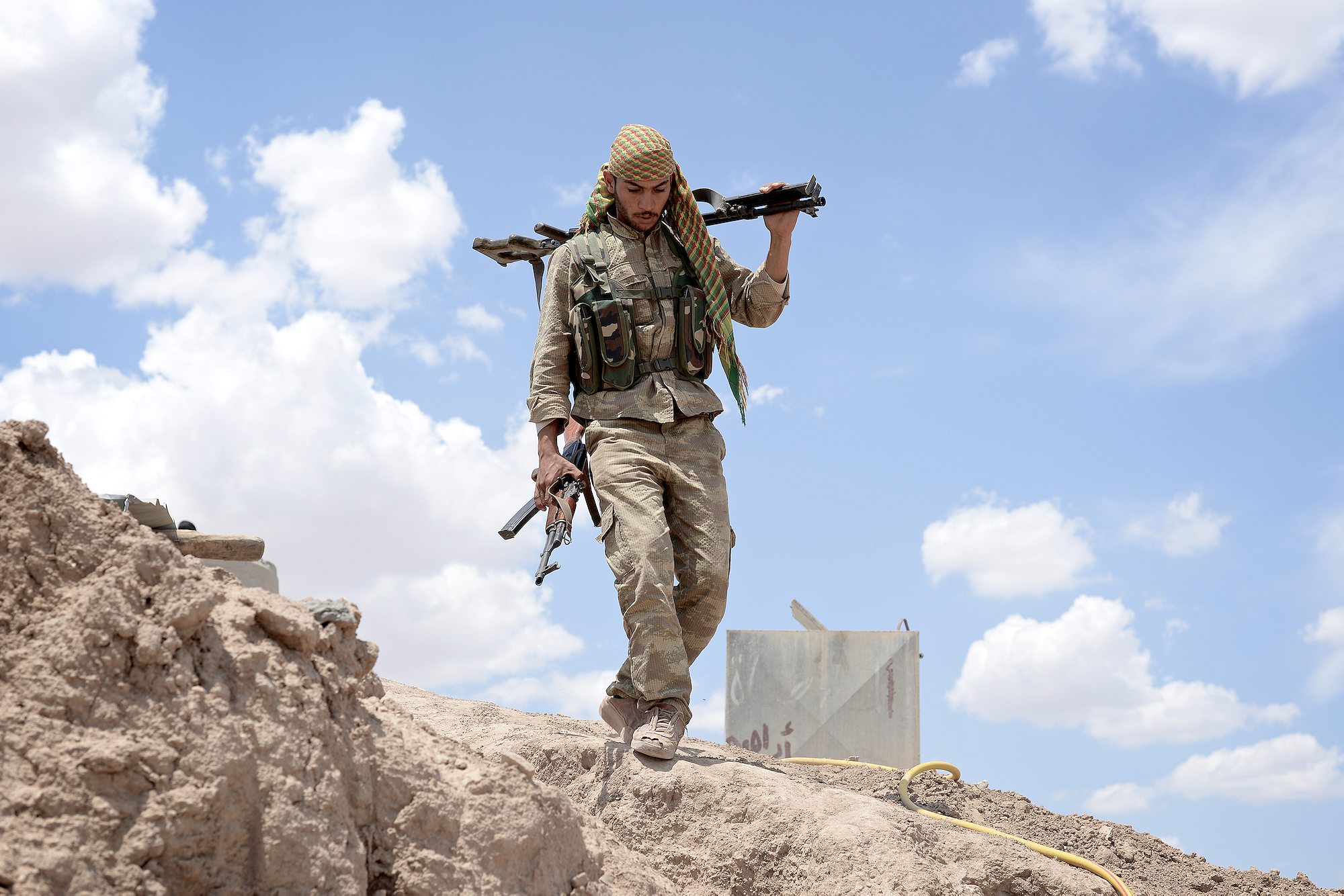
In stark contrast to the wasteland of other Syrian cities, al-Qamishli, one of the largest cities under Kurdish control, is lively and appears untouched by the war raging tens of miles away. There are wedding celebrations, functioning public transportation systems, water and garbage sanitation teams, police and security guards on almost every corner, and open schools and hospitals. Further out, Rojava’s countryside is rich with crops, and their harvest allows local communities to function. Roads are filled with farmers leading their flocks of sheep between pastures, and truckloads of laborers heading to worksites.
“The Kurdish people believe in peace, they don’t like blood and killing, they don’t see themselves as with the rebels or Assad. They are the Third Line,” says Akram Hasso, a man who Syrian Kurds are calling the Prime Minister of Cizîr Canton; one of three sections of Kurdish-controlled Syria. I’m sitting in the backseat of his silver 80’s Mercedes, and I can’t help but glance at the machine-gun that was just placed in the passenger’s seat.
We’re hurtling toward the western fringes of the Kurdish territory of Cizîr Canton, toward the front lines of the Kurd’s war with ISIS. We’re in a hurry, bouncing along the patchy asphalt road at nearly 80 miles an hour. There are reports of a massacre of Arab and Kurdish civilians in the village of al-Taliliya. Hasso, whose formal title is Chairman of the Executive Council for the region’s interim government, the Kurdish Supreme Committee, is driving to investigate. Endless wheat fields stretch on both sides of the car, yellow against the cloudless blue sky. The horizon is dotted with billows of thick black smoke from makeshift oil refineries that arch with the wind. We pass a few villages with clusters of mud huts, set back far from the road, attached only by a narrow trail.
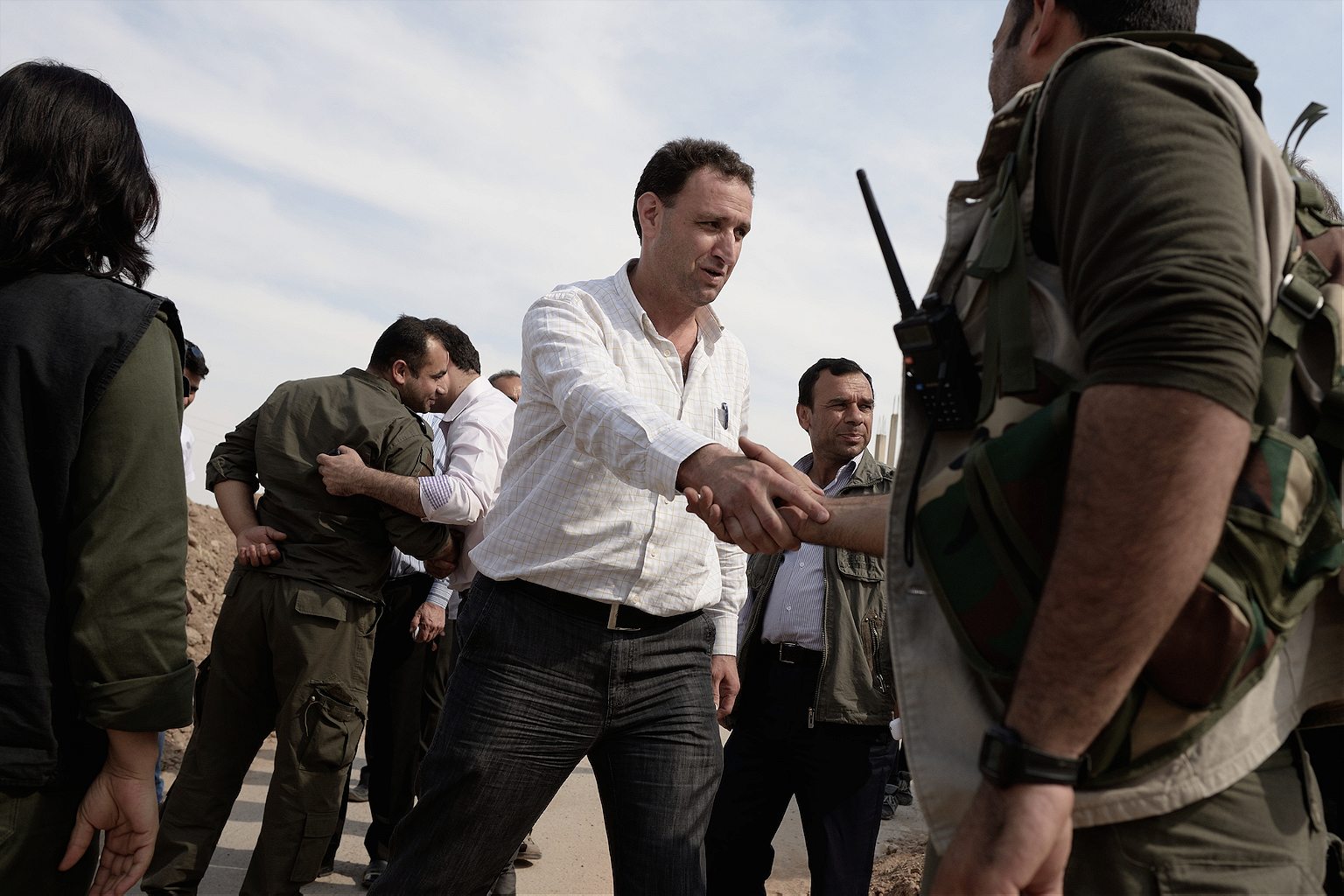
Hasso is a controversial figure in Syrian politics and something of a metaphor for the Kurdish condition here. Like many Kurdish government officials, he’s a target for Syrian regime supporters as well as rebel groups. ISIS wants his head and there are also concerns of attacks from the Turks, who aggressively oppose Kurdish statehood. Despite the dangers, Hasso keeps the mood light. He pokes fun at the irony of the situation, and jokes about the likelihood of Obama driving his own car. He points out the window as we pass another mound of dirt hills and Kurdish armed guards manning a makeshift checkpoint, “We protect ourselves. We built this all to protect our people.”
The Kurdish attempt at democracy and self-rule in the midst of an ongoing civil war has its costs. Rojava remains cut off from the rest of the world: its borders are closed with Iraq to the east and Turkey to the north. The increasingly violent battle with ISIS extremists has shut off routes to the west and south. The isolation has taken its toll on the region’s economy and the cost of commodities has tripled or quadrupled, if the goods can be found at all. Finding work in Rojava is also difficult. Service jobs have dried up and most forms of foreign trade are impossible. In this tense economic climate, a large number of internally displaced persons have found their way to Rojava from war-ravaged cities like Raqqa and Aleppo for relative safety under the watch of the YPG and Asayish.
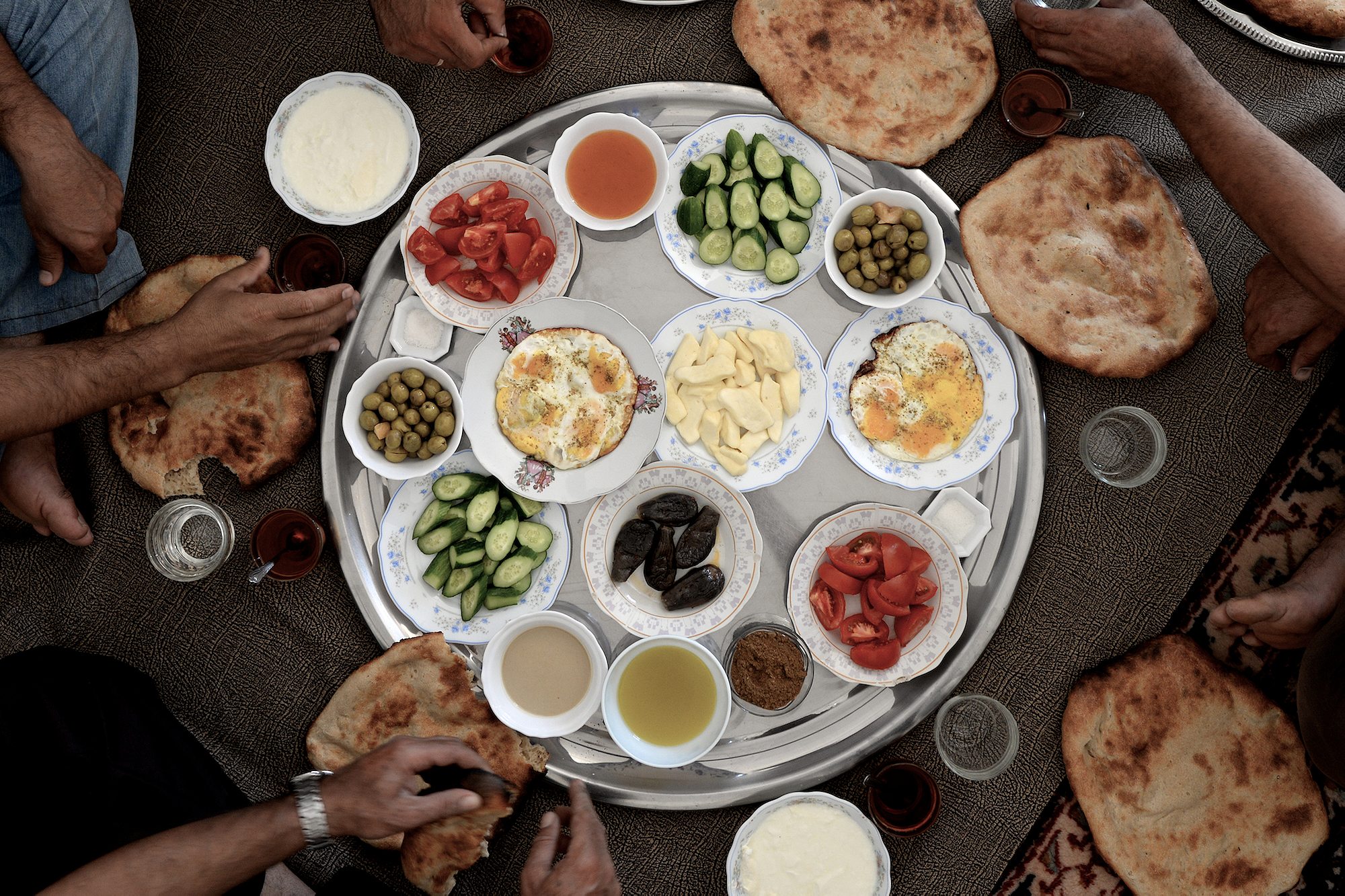
The Kurds may want peace, but they most certainly do not have it. After 45 minutes of driving with Hasso, we arrive at an abandoned hospital that is now a makeshift morgue in the village of al-Taliliya. A heart-shattering wail from a woman pierces the air even before the dead come into view. The bodies of four adult men are laid out on a blanket, riddled with bullet holes, faces caved in. At the end of the tarp lies a young teenager, his left leg missing a chunk as if the skin was frozen and broken away.
As Hasso scans the bodies, a man with a machine-gun hanging from his shoulder leads us further down the dock past the male bodies and stops in front of two lumps lying under a blanket. He reaches down and uncovers what’s left of a young boy and girl, shot numerous times at close range with high caliber weaponry aimed at their heads. The body of a woman is the last one down the row. She’s covered and away from the group. Her bloody hands peek out from under the blanket.
The bodies I’m looking at are half of an Arab family murdered in their beds during the early morning hours, ostensibly by ISIS. They fled the war in Aleppo for the supposed safety and security of Kurdish-controlled regions. But as ISIS attempts to grow its “caliphate,” it continues spreading violence, often by targeting civilians. There are the suicide bombings, like the two in the first week of October that ripped through checkpoints in Hasakah, killing 30 people. There was the kidnapping of over 130 school children in June in which the militants released kids in batches but held most of them until the end of September. And there are the beheading videos of captured Kurdish fighters and civilians posted online for anyone with an Internet connection to see.
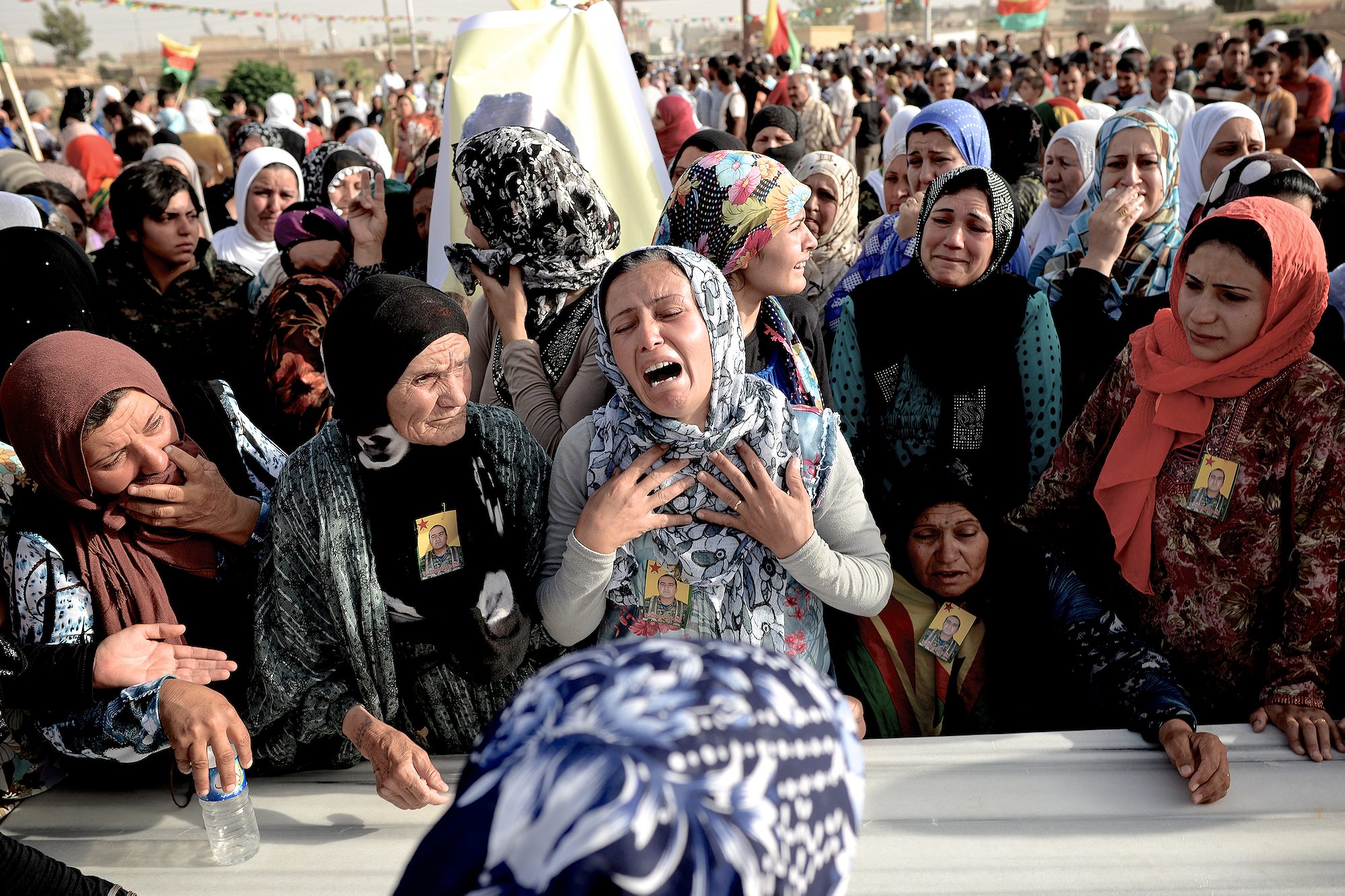
Just as we reach the last body, shouting and gunfire ring out from across the parking structure. Two shots, then three. Confused, people scatter from around the bodies. In the hospital’s driveway, Hasso is quickly surrounded by armed men. A mini-van lunges forward and screeches to a halt. Four bearded, long-haired men’s bodies lay half-hanging out the back of the van. There’s blood everywhere. It’s unclear where they had been shot—here at the hospital or elsewhere. A man runs around the crowd screaming and pointing, “DAISH! (the regional acronym for ISIS) DAISH!” This is the new enemy of the Kurds, up close, with fresh gaping wounds in the back of their heads.
Hasso is escorted by a few men past the truck and back to his car. Dust whips around him as he gets in the door. His shirt is sweat-stained, his eyes fixated as he grab the wheel of his Mercedes once again. I jump in the backseat and we take off down another dusty road.

The ISIS threat has grown exponentially over the past months as heavy weapons from their campaign in Iraq are moved back into Syria. In these bleak times, the Kurds have little to no foreign assistance; an all-too-common theme in the Kurdish long history of bitter international isolation. There are no military relations with Western nations, no arms deals, and barely any humanitarian aid in northeastern Syria. The Syrian Kurdish governments and YPG are closely aligned with the Kurdistan Workers’ Party (PKK), which is listed as an terrorist organization by NATO as well as the United States.
Despite this, the YPG forces continue to prove themselves as one of, if not the most effective forces fighting ISIS. Over the past year, they’ve retaken territory initially seized by ISIS and successfully defended their borders. But ISIS is much stronger and better armed than they were a year ago; incursions are on the increase.

The current ongoing assault of the Kurdish-controlled Syrian city of Kobane by ISIS though may mark a small turning point in their war. The YPG’s defense of the city has withstood the brunt of heavy weaponry for a number of weeks, and attracted the spotlight of international media. Perhaps more importantly, the battle for Kobane marks one of the first times the recently formed American-led coalition came to the YPG’s aid, when it began bombing ISIS positions on September 28th.
Later that day, Hasso parks his car near the edge of the al-Taliliya where a large column of Asayish fighters is lining up, preparing for their reprisal attack alongside the YPG. The long row of pickup trucks and minivans are coated with mud, a cheap camouflage in the desert. Hasso is escorted to a position where he can wave the fighters off. He stands there alongside other local politicians, sweating in the heat, as the vehicles begin their move towards the frontline and a crackling speaker in the distance begins playing a Kurdish war song.
After the last truck passes, Hasso beckons me back to his car and I walk to meet him. A tall young man walking beside me and leans over to ask if I heard the music. I nod. A large smile spreads across his face. “Asayish are going to dance,” he says. “Dance with Daish.”